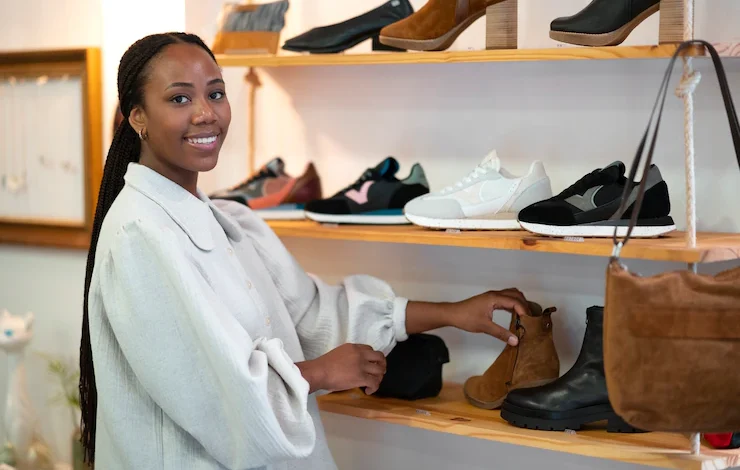How to start a Shoe store in South Africa

Starting a shoe store in South Africa can be an exciting and profitable venture for individuals with a passion for footwear and a keen eye for fashion. The country’s growing economy, diverse population, and increasing consumer demand make it an attractive market for retail businesses. However, like any entrepreneurial endeavor, establishing a successful shoe store requires careful planning and execution. In this article, we will guide you through the essential steps to launch your own shoe store in South Africa.
Step 1: Market Research Before diving into the shoe business, conduct thorough market research. Identify your target customers, their preferences, and their purchasing habits. Understand the competition in your area and determine your unique selling proposition. Analyze market trends, such as popular shoe styles, price points, and consumer demands. This research will lay the foundation for your business strategy and help you make informed decisions moving forward.
Step 2: Develop a Business Plan Create a comprehensive business plan that outlines your goals, strategies, and financial projections. Include details about your target market, product range, pricing, marketing tactics, and operational procedures. Determine your startup costs, including inventory, store setup, licensing, permits, and marketing expenses. A well-structured business plan will not only serve as a roadmap for your venture but also attract potential investors or lenders.
Step 3: Secure Funding Evaluate your financial resources and determine how much capital you need to start and operate your shoe store. Explore various funding options, such as personal savings, bank loans, grants, or partnerships. Consider approaching financial institutions or government programs that support small businesses. Present your business plan to potential investors and demonstrate the viability and profitability of your venture.
Step 4: Choose a Location Selecting the right location is crucial for the success of your shoe store. Look for areas with high foot traffic, preferably near shopping centers, malls, or popular commercial districts. Consider factors like accessibility, parking facilities, and proximity to your target market. Negotiate lease terms with the property owner, ensuring it aligns with your budget and long-term goals.
Step 5: Obtain Licenses and Permits Comply with all legal requirements by obtaining the necessary licenses and permits to operate your shoe store. Visit the local municipality or relevant authorities to inquire about the specific permits needed for your retail business. This may include business registration, tax registration, health and safety compliance, and trade permits. Adhering to legal obligations will help you avoid potential penalties and ensure a smooth operation.
Step 6: Source Inventory and Suppliers Establish relationships with reliable shoe suppliers, both local and international, to source a diverse range of quality footwear. Consider partnering with renowned brands, as well as stocking trendy and affordable options to cater to a wide customer base. Maintain a healthy inventory level, balancing popular styles and sizes to meet customer demands. Efficient inventory management will help minimize costs and maximize profitability.
Step 7: Store Setup and Visual Merchandising Create an inviting and visually appealing store layout that highlights your shoe collection. Optimize your store’s design, shelving, and display fixtures to provide a seamless shopping experience. Invest in comfortable seating areas for customers to try on shoes and make informed purchase decisions. Pay attention to lighting, signage, and branding to create a unique and memorable shopping environment.
Step 8: Implement Marketing Strategies Develop a comprehensive marketing plan to promote your shoe store and attract customers. Leverage both online and offline channels to reach your target audience. Establish an engaging website or e-commerce platform, actively participate in social media platforms, and utilize search engine optimization (SEO) techniques. Additionally, consider traditional advertising methods, such as print media, local partnerships, and community events. Offer promotions, loyalty programs, or collaborations to build customer loyalty and drive sales.
Starting a shoe store in South Africa requires careful planning, market research, and a strong understanding of consumer preferences. By following the step-by-step guide outlined above, you can lay a solid foundation for a successful shoe retail business. Remember to stay adaptable, continually assess market trends, and provide excellent customer service to thrive in the competitive footwear industry. With dedication, perseverance, and a passion for shoes, you can turn your entrepreneurial dream into a profitable reality.




